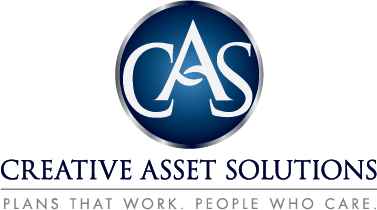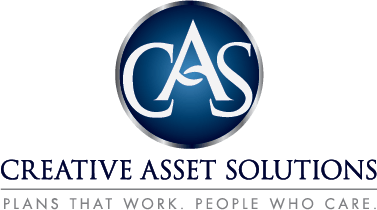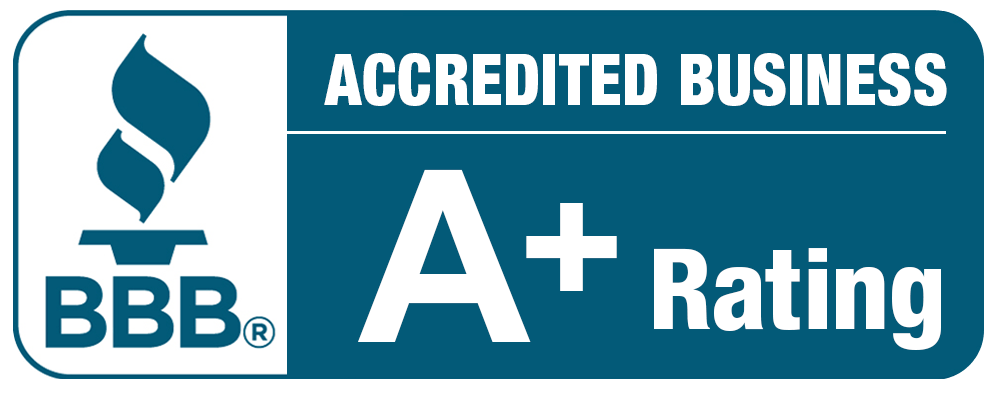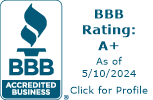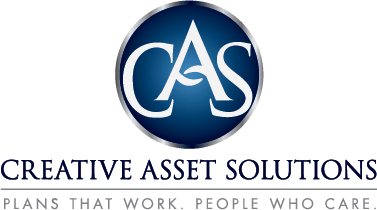We’re here for you—you’re all we think about, every day.
We’re independent. That means we can tailor our products and services to your needs.
Not all wealth managers are free to choose when it comes to product selection. Some are captive to big conglomerates. We’re not. We treasure our independence at Creative Asset Solutions. We value it because we know it allows us to create plans that are custom-designed for whatever the people we serve need most.
We're here for you—you're all we think about, every day.
We’re independent. That means we can tailor our products and services to your needs.
Not all wealth managers are free to choose when it comes to product selection. Some are captive to big conglomerates. We’re not. We treasure our independence at Creative Asset Solutions. We value it because we know it allows us to create plans that are custom-designed for whatever the people we serve need most.
We’re here for you—you’re all we think about, every day.
We’re independent. That means we can tailor our products and services to your needs.
Not all wealth managers are free to choose when it comes to product selection. Some are captive to big conglomerates. We’re not. We treasure our independence at Creative Asset Solutions. We value it because we know it allows us to create plans that are custom-designed for whatever the people we serve need most.
Financial Planning and Wealth Management
You probably need a plan to tackle both challenges.
You can’t get to your destination if you don’t have a map. That’s true generally but it also works as a metaphor for your financial life.
When we sit down with you, we ask, “Where do you want to go?” That’s the most important question we ask. It tells us where you are in your life. It lets us know, “Are they trying to accumulate wealth or distribute it throughout their retirement?” It tells us your risk tolerances.
Once we know your goals, and we know what state your finances are in currently, we can create a plan for you and present our recommendations. There’s rarely one way to get from Point A to Point B. We provide you with the pros and cons for scenarios; we help you make a comprehensive wealth management plan. Once you’ve heard our proposals, you make the final decision on what we put into practice, together.
After that, we don’t disappear. Once we have your plan, we’ll continue to help you stick to it, and if the need arises, we’ll help you reevaluate your needs. We’re an independent firm—that means you’re never alone. We’re always here to put your best interests first.
We think investing advice still means something to clients—and we personally believe advisers do add value to plans and portfolios. Nothing can protect an individual completely from market volatility, but we align our clients’ portfolios with their risk tolerances to ensure that they’re comfortable with their wealth management choices. It’s all about listening, planning, executing, and monitoring the plan we have in place in partnership with the people we serve.
Research¹ has consistently found the best way to maximize returns across every level of risk is to combine assets and allow individual securities to generate alpha. Assets fall under three broad categories—stocks, and cash equivalents or money markets—but could also include property or real estate, commodities, futures, and cryptocurrencies, to name a few.² Once we understand a situation, we can begin to construct a plan, using different asset classes and instruments, products and services, to deliver a holistic strategy.
What we recommend to a client depends on that client’s specific, individual needs. There is no such thing as a one-size-fits-all approach in wealth management.
¹ Markowitz, 1952; Sharpe, 1964; Brinson, Hood & Beebower, 1986; Brinson, Singer & Beebower, 1991; Ibbotson & Kaplan, 2000.
² Akhilesh Ganti, “Asset Class Definition,” Investopedia, accessed February 27, 2020, https://www.investopedia.com/terms/a/assetclasses.asp.
Financial Planning and Wealth Management
You probably need a plan to tackle both challenges.
You can’t get to your destination if you don’t have a map. That’s true generally but it also works as a metaphor for your financial life.
When we sit down with you, we ask, “Where do you want to go?” That’s the most important question we ask. It tells us where you are in your life. It lets us know, “Are they trying to accumulate wealth or distribute it throughout their retirement?” It tells us your risk tolerances.
Once we know your goals, and we know what state your finances are in currently, we can create a plan for you and present our recommendations. There’s rarely one way to get from Point A to Point B. We provide you with the pros and cons for scenarios; we help you make a comprehensive wealth management plan. Once you’ve heard our proposals, you make the final decision on what we put into practice, together.
After that, we don’t disappear. Once we have your plan, we’ll continue to help you stick to it, and if the need arises, we’ll help you reevaluate your needs. We’re an independent firm—that means you’re never alone. We’re always here to put your best interests first.
We think investing advice still means something to clients—and we personally believe advisers do add value to plans and portfolios. Nothing can protect an individual completely from market volatility, but we align our clients’ portfolios with their risk tolerances to ensure that they’re comfortable with their wealth management choices. It’s all about listening, planning, executing, and monitoring the plan we have in place in partnership with the people we serve.
Research¹ has consistently found the best way to maximize returns across every level of risk is to combine assets and allow individual securities to generate alpha. Assets fall under three broad categories—stocks, and cash equivalents or money markets—but could also include property or real estate, commodities, futures, and cryptocurrencies, to name a few.² Once we understand a situation, we can begin to construct a plan, using different asset classes and instruments, products and services, to deliver a holistic strategy.
What we recommend to a client depends on that client’s specific, individual needs. There is no such thing as a one-size-fits-all approach in wealth management.
¹ Markowitz, 1952; Sharpe, 1964; Brinson, Hood & Beebower, 1986; Brinson, Singer & Beebower, 1991; Ibbotson & Kaplan, 2000.
² Akhilesh Ganti, “Asset Class Definition,” Investopedia, accessed February 27, 2020, https://www.investopedia.com/terms/a/assetclasses.asp.
Financial Planning and Wealth Management
You probably need a plan to tackle both challenges.
You can’t get to your destination if you don’t have a map. That’s true generally but it also works as a metaphor for your financial life.
When we sit down with you, we ask, “Where do you want to go?” That’s the most important question we ask. It tells us where you are in your life. It lets us know, “Are they trying to accumulate wealth or distribute it throughout their retirement?” It tells us your risk tolerances.
Once we know your goals, and we know what state your finances are in currently, we can create a plan for you and present our recommendations. There’s rarely one way to get from Point A to Point B. We provide you with the pros and cons for scenarios; we help you make a comprehensive wealth management plan. Once you’ve heard our proposals, you make the final decision on what we put into practice, together.
After that, we don’t disappear. Once we have your plan, we’ll continue to help you stick to it, and if the need arises, we’ll help you reevaluate your needs. We’re an independent firm—that means you’re never alone. We’re always here to put your best interests first.
We think investing advice still means something to clients—and we personally believe advisers do add value to plans and portfolios. Nothing can protect an individual completely from market volatility, but we align our clients’ portfolios with their risk tolerances to ensure that they’re comfortable with their wealth management choices. It’s all about listening, planning, executing, and monitoring the plan we have in place in partnership with the people we serve.
Research¹ has consistently found the best way to maximize returns across every level of risk is to combine assets and allow individual securities to generate alpha. Assets fall under three broad categories—stocks, and cash equivalents or money markets—but could also include property or real estate, commodities, futures, and cryptocurrencies, to name a few.² Once we understand a situation, we can begin to construct a plan, using different asset classes and instruments, products and services, to deliver a holistic strategy.
What we recommend to a client depends on that client’s specific, individual needs. There is no such thing as a one-size-fits-all approach in wealth management.
¹ Markowitz, 1952; Sharpe, 1964; Brinson, Hood & Beebower, 1986; Brinson, Singer & Beebower, 1991; Ibbotson & Kaplan, 2000.
² Akhilesh Ganti, “Asset Class Definition,” Investopedia, accessed February 27, 2020, https://www.investopedia.com/terms/a/assetclasses.asp.
Insurance Planning and Strategy
Insurance Planning and Strategy
Are you protecting what matters the most to you?
Insurance is a term people often use but not one they always understand. For customers, insurance companies offer a contract (known as a policy) whereby an individual or corporation receives a promise of reimbursement against possible losses in exchange for a premium.
There are several types of insurance. Some of them—like life insurance—are straightforward. Yet, even in life insurance, there are many things to consider, like term vs. whole life. Other types of insurance, such as fixed indexed annuity contracts, might require even more explanation. You can buy insurance for your car, home, boat, or business. You can also buy insurance for things like needing long-term care in retirement, liability insurance for your business, disability insurance for your profession, and Medicare gap coverage.
People often talk about insurance as “protection,” but it’s really a form of risk mitigation. Nothing can protect you from risk. However, with a thoughtful, proactive, and detailed insurance plan (as part of a comprehensive financial plan), you may find yourself with more options than you would have had without insurance.
Insurance Planning and Strategy
Are you protecting what matters the most to you?
Insurance is a term people often use but not one they always understand. For customers, insurance companies offer a contract (known as a policy) whereby an individual or corporation receives a promise of reimbursement against possible losses in exchange for a premium.
There are several types of insurance. Some of them—like life insurance—are straightforward. Yet, even in life insurance, there are many things to consider, like term vs. whole life. Other types of insurance, such as fixed indexed annuity contracts, might require even more explanation. You can buy insurance for your car, home, boat, or business. You can also buy insurance for things like needing long-term care in retirement, liability insurance for your business, disability insurance for your profession, and Medicare gap coverage.
People often talk about insurance as “protection,” but it’s really a form of risk mitigation. Nothing can protect you from risk. However, with a thoughtful, proactive, and detailed insurance plan (as part of a comprehensive financial plan), you may find yourself with more options than you would have had without insurance.
Retirement Income Planning
Retirement Income Planning
Are you sure you won’t outlive your income in retirement?
No two careers follow the same trajectory. Following that, no two retirements are quite the same, either. Everyone will have different goals, needs, and strategies.
We take the time to listen to your needs and formulate a plan to take you from the accumulation phase of your life to the distribution phase. According to one study, 43% of people in America aren’t afraid of being bored, unable to travel, or dying in retirement—their #1 fear is outliving their money.¹ That number jumps to 60% when you look at Baby Boomers. These fears, according to the data, are justified: People in their 50s have only saved an average of $117,000 for retirement. Experts say a “healthy” retirement savings account would have something like six times a person’s current salary.¹ This disparity, to say the least, is striking.
Whatever your plan, and whatever your retirement goals, our firm could help you put together a retirement income plan. We’re ready to listen; we’re ready to lend our experience.
¹ Catey Hill, “Older People Fear This More than Death,” MarketWatch, accessed July 24, 2019, https://www.marketwatch.com/story/older-people-fear-this-more-than-death-2016-07-18.
Retirement Income Planning
Are you sure you won’t outlive your income in retirement?
No two careers follow the same trajectory. Following that, no two retirements are quite the same, either. Everyone will have different goals, needs, and strategies.
We take the time to listen to your needs and formulate a plan to take you from the accumulation phase of your life to the distribution phase. According to one study, 43% of people in America aren’t afraid of being bored, unable to travel, or dying in retirement—their #1 fear is outliving their money.¹ That number jumps to 60% when you look at Baby Boomers. These fears, according to the data, are justified: People in their 50s have only saved an average of $117,000 for retirement. Experts say a “healthy” retirement savings account would have something like six times a person’s current salary.¹ This disparity, to say the least, is striking.
Whatever your plan, and whatever your retirement goals, our firm could help you put together a retirement income plan. We’re ready to listen; we’re ready to lend our experience.
¹ Catey Hill, “Older People Fear This More than Death,” MarketWatch, accessed July 24, 2019, https://www.marketwatch.com/story/older-people-fear-this-more-than-death-2016-07-18.
Legacy Planning
Legacy Planning
Are you sure about the legacy you’re planning to leave?
Legacy planning can be an emotional and complex series of decisions. Whether you want to leave your assets to your heirs or charity or want to develop a succession plan for your business, we can help you design a strategy that allows you to share your life’s successes with others while also leaving a legacy for those you love.
You don’t need to be wealthy to take advantage of some of the legacy planning options available today. For example, trust funds are not only for the super-rich. You need to get comfortable with terminology like Power of Attorney, Payable on Death (POD) and Transfer on Death (TOD), and Next of Kin. When it comes to all of these techniques, you might need estate planners and attorneys to help you navigate the complicated rules around estate planning.
Call us today to ask how we could help you with your estate planning needs.
¹ “Estate Planning,” Investopedia, accessed February 27, 2020, https://www.investopedia.com/estate-planning-4427729
Legacy Planning
Are you sure about the legacy you’re planning to leave?
Legacy planning can be an emotional and complex series of decisions. Whether you want to leave your assets to your heirs or charity or want to develop a succession plan for your business, we can help you design a strategy that allows you to share your life’s successes with others while also leaving a legacy for those you love.
You don’t need to be wealthy to take advantage of some of the legacy planning options available today. For example, trust funds are not only for the super-rich. You need to get comfortable with terminology like Power of Attorney, Payable on Death (POD) and Transfer on Death (TOD), and Next of Kin. When it comes to all of these techniques, you might need estate planners and attorneys to help you navigate the complicated rules around estate planning.
Call us today to ask how we could help you with your estate planning needs.
¹ “Estate Planning,” Investopedia, accessed February 27, 2020, https://www.investopedia.com/estate-planning-4427729
